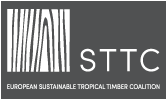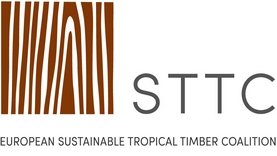IDH identifies partnership prospects for forest action

Photo: CIFOR
IDH – The Sustainable Trade initiative is revising its strategy on tropical timber. It’s still a work in progress, but according to Willem Klaassens, IDH Markets and SourceUp programme Director, a core theme is already emerging. It’s that there’s no magic bullet for combating illegal tropical timber trade and deforestation and ensuring sustainability.
“What is needed is a combination of actions; achieving synergies between initiatives, complementing voluntary measures with regulation and strengthening cooperation and partnership between public and private sector and demand and supply-side stakeholders,” said Mr Klaassens. “Only by getting this combination right, will we achieve results.”
IDH works with multiple stakeholders to achieve sustainable trade in global value chains. In recent years it has been active in producer countries on sustainability initiatives for a range of tropical commodities, including soy, palm oil and cocoa, but its tropical timber involvement has been more market focused. “We now think the time is right to get back more on the ground in producer countries on tropical timber projects, notably in central Africa,” said Mr Klaassens. “This follows extensive discussion with stakeholders, but has also been prompted by the advent of the EU Green Deal and growing influence of the carbon agenda. These are raising interest in issues around sustainable tropical timber and deforestation, increasing opportunities for new initiatives.”
One potential aspect of the new IDH strategy, tying in with its aim to encourage increased stakeholder collaboration, is greater engagement with Chinese actors in the tropical trade. “China wields huge market influence, notably in the Congo Basin where it’s estimated to take 50% of timber production,” said Mr Klaassens. “We’re looking at possibilities for connecting with Chinese concessionaries; acting as broker between them and local authorities and communities to develop partnerships; saying to them, ‘we know you’re not yet certified, or adhering to all the rules we’d like you to, but we’re here to guide and help’. We’re also considering setting up an IDH operation in China.”
While IDH continues to support certification, it sees the way forward as certification operating within a sustainable landscape approach. Hence the significance to its strategy going forward of its SourceUp verified sourcing areas programme. With 11 projects underway in tropical countries worldwide, this involves establishment of ‘Compacts’, comprising the range of stakeholders, from small holder forest owners, farmers and SME producers, to major exporters, civil society and regional authorities. These set sustainability priorities and targets – which may include certification – for their area or jurisdiction. Underpinned by the SourceUp platform (www.sourceup.org), the initiative also facilitates investment by buyers and financial institutions in the Compacts.
IDH also founded the Sustainable Tropical Timber Coalition (STTC) and says it has been successful in bringing together stakeholders to tackle key issues and collating and analysing data to inform sustainable tropical timber market development. Mr Klaassens identified its new Thémis market data gathering tool and portal as having particular potential. IDH sees prospects too to work increasingly closely with the International Tropical Timber Technical Association (ATIBT). Among its many activities, Mr Klaassens noted its ambition to find synergies between the FLEGT initiative and sustainability certification. ATIBT is also becoming more involved in the STTC Conference, which will run this year under the banner of the STTC and ATIBT’s Fair&Precious tropical timber marketing campaign, entities, which already work together on this newsletter.
Mr Klaassens maintains there remain ‘some grounds for pessimism’ on tropical forest maintenance, supported by a sustainable timber trade. “But the European Green Deal and growing influence of the carbon agenda put things in a new context,” he said. “They create new impetus for action on the forest and that’s always been IDH’s strategy objective – action and impact rather than just talk.”









